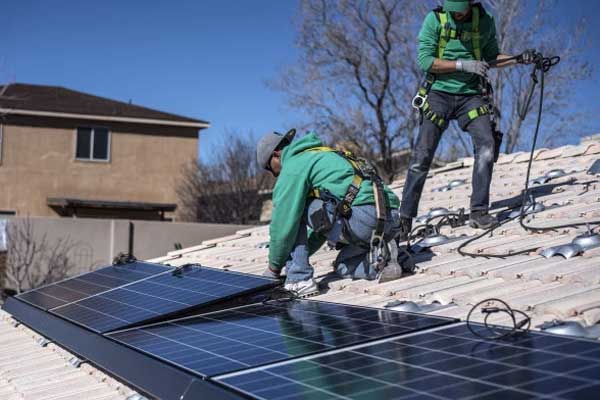University of Oslo — International climate agreements like the Kyoto Protocol may discourage much-needed investment in renewable energy sources, and hence be counterprodutive, according to new research.
The climate formula
The world’s environmentalists are counting down to the upcoming UN climate summit in Paris. However, such climate agreements could be counterproductive.
Bård Harstad is a professor of economics at the University of Oslo and has done research on climate agreements and international cooperation for many years. In the recent journal article “The Dynamics of Climate Agreements,” Harstad analyses the connections between emissions, negotiations, and the development of new technology. His findings reveal weaknesses of today’s system, but also show how international climate agreements should be designed in order to better stimulate the development of new technology.
The bad news is that international climate agreements, like the Kyoto Protocol, may discourage much-needed investment in renewable energy sources.
“The main problem with emission agreements, such as the Kyoto Protocol, is that they do not provide incentives to invest in green technology because they are too short-sighted.
The basis for the U.N.’s climate negotiations is that the world requires more energy but at the same time fewer emissions. Hence, Harstad argues that it is imperative to develop new technology to resolve this challenge. According to him, politicians lack an understanding of how new technology is developed and affected by a treaty.
“In order to stimulate the development of new technologies, we need an agreement which is both long-term and ambitious. Instead of expiring, the agreement should be renegotiated at a later stage,” he says.
Lack of incentives
Why is so-called green technology such a critical issue for the global climate? Harstad claims that the demand is two-sided: On the one hand, energy can be used more effectively. On the other hand, we have to develop renewable energy from sources like sunlight, wind, and biomass.
The main reason why the current, short-term climate agreements do not lead to any increased investments in green technology is described by Harstad as the hold-up problem. In today’s system the countries investing in green technology may be asked to reduce their emissions even more in the next negotiation round. It is often argued that countries, which have the technology in place, can reduce emission in a more effective and cheaper way. In other words, the most committed countries are subject to tougher requirements.
“This was the case when Denmark, which had invested a lot in wind power, negotiated with the other countries in the European Union on how to reduce aggregate emission. Poland, which had little renewable energy, argued that it would be easier for Denmark to reduce emissions than for them,” says Harstad.
Hence, it makes it less tempting to be the best in class, like Denmark, and more tempting to stay at the same level as other countries.
Worse than no deal
Thanks to this hold-up problem, Harstad shows that investments in green technology may in fact be less with a climate agreement in place than without one, if there is little time left until the next negotiation round.
“In this case, a short-term agreement may be worse than no deal at all, particularly if we believe that green technology is a large part of the solution to climate change.”
He thinks that a long-term agreement would give the world’s governmental leaders much stronger incentives to invest in green technology.
“It is very likely that there would have been much more money in green technology today, if we had a long-term climate agreement in place, rather than short-lasting ones, such as the Kyoto Protocol,” he says.
Certainly, the cost level of renewable energy has decreased significantly the last decade, in particular on solar cells. However, renewable energy is still not cheap enough to replace fossil energy sources like coal, Harstad points out.
“The costs of clean energy have decreased. Germany has subsidized renewable energy, as part of its energy transition, and China is making investments as well. But the costs of extracting fossil fuels, like shale oil and shale gas, have dropped even more,” the professor says.
Critical time frame
What characterises a good international climate agreement? The time frame may be the most critical issue, according to Harstad. The agreement must be long-term in order for countries to be willing to invest sufficiently to get a sustainable development going.
Furthermore, the agreement must include ambitious emission reduction targets. Only then will we see a real demand for new and green technology. If one cannot achieve a long-term agreement, it is even more important to require large emission cuts to motivate countries to invest. The recent research findings show that the shorter the agreement is, the more ambitious it must be in order to stimulate new technology.
Look to trade agreements
Harstad suggests an alternative model based on international trade agreements. Ideally, the commitments should not expire, but rather be frequently renegotiated.
“The reason is that the development of technology affects countries’ negotiation power,'”he says.
The hold-up problem will be avoided if we have a long-term agreement that is subject to renegotiation, Harstad explains. The reason is that it will be easier for countries with high investments in green technology to meet their obligations, whether or not an updated agreement is reached.
“In other words, countries which have invested in green technology will benefit from renegotiations. This will make green technology more attractive,” says Harstad.
He points out that international trade agreements do not expire. Instead, they are subject to renegotiation by the parties.
“The climate agreement negotiators can therefore learn from successful trade agreements,” says Harstad.
It is often argued that we need short-term agreements because we do not know how the climate will look like in 50 years’ time. Hence, we need flexibility as well as a long-term time frame, according to Harstad. If we could renegotiate the agreement to adjust the reductions as we go, we would take both these issues into considerations.
Paris is next
The world’s governmental leaders will meet up in Paris in December to negotiate a new global climate agreement. It remains to be seen whether the negotiations will result in a long-term and ambitious global commitment to curb carbon emissions. President Barack Obama recently promised that the U.S. would show leadership, and he has claimed that a strong climate agreement is the first step on the way.
But what about Harstad, is he optimistic about the outcome of negotiations in Paris?
“It is difficult to be optimistic. The basis for the Paris negotiations is that each country will suggest its own obligations, and they will not be binding. This procedure is clearly far from ambitious. The best one may hope for is that the agreement will be long-term and that it can easily be renegotiated to a more ambitious level later on.”












Comments